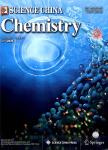Enhanced proton conductivity of Mo_(154)-based porous inorganic framework
Enhanced proton conductivity of Mo154-based porous inorganic framework作者机构:Collaborative Innovation Center of Chemistry for Energy MaterialsState Key Laboratory of Physical Chemistry of Solid SurfacesDepartment of ChemistryCollege of Chemistry and Chemical EngineeringXiamen UniversityXiamen 361005China
出 版 物:《Science China Chemistry》 (中国科学(化学英文版))
年 卷 期:2021年第64卷第6期
页 面:959-963页
核心收录:
学科分类:0808[工学-电气工程] 08[工学] 080501[工学-材料物理与化学] 0805[工学-材料科学与工程(可授工学、理学学位)]
基 金:This work was supported by the National Natural Science Foundation of China(21871224,21673184,21721001) CAS Interdisciplinary Innovation Team(BK2018001) the Fundamental Research Funds for the Central Universities(20720180032)
主 题:polyoxomolybdate proton conductor three-dimensional structure self-assembly cluster
摘 要:The construction of inorganic porous frameworks from discrete polyoxometalate(POM)units is a major research ***,a three-dimensional(3D)all-inorganic porous structure{Mo_(154)}_n that consists of classic Mo_(154)rings connected by Mo–O–Mo covalent bonds was ***,the proton conductivity of the 3D-{Mo_(154)}_n framework is 1.1×10^(-2)S cm^(-1)at 22℃and 100%relative humidity(RH),which is one of the highest proton conductivities reported thus far for POM-based conductive *** to the discrete{Mo_(154)}cluster and 1D-{Mo_(154)}_n,the enhanced conductivity of 3D-{Mo_(154)}_n suggests that assembling POM-based all-inorganic porous frameworks is a promising method for designing proton-conductive materials.



